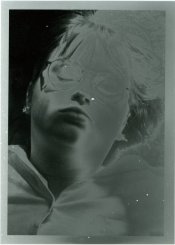Thomas Bertilsson
Member
During a printing session I had made some test prints in order to get to a finished print of a certain neg. Printing my second sheet, turning the lights on, I look over towards the trash can, and I see this happening to the first print. I immediately threw it in the stop bath, and then in the fixer, to finally wash it. I cannot for the life of me remember what I had done prior to tossing this sheet of paper, but I'd love to learn how to duplicate this effect.
Please share any ideas you may have.
Thanks,
- Thomas
Please share any ideas you may have.
Thanks,
- Thomas













